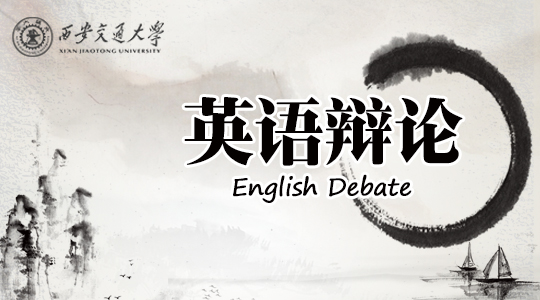
当前课程知识点:History of Western Civilization 全英文西方文明史 > Chapter 6 Renaissance and Reformation > 6.3 Italian Wars and Rise of Russia > 6.3.1 Text
返回《History of Western Civilization 全英文西方文明史》慕课在线视频课程列表
6.3 Italian Wars and Rise of Russia
Hi, this is the third part of chapter six, Italian wars and rise of Russia
1. The Italian Wars from 1494 to 1559 were fighting in Italy but it was actually the power struggle between France and Spain. European states began to take shape at the end of the fifteenth century. Like Machiavelli observed, in the process of consolidation of a state the role of the prince was crucial. In most states the throne was inherited followed the tradition of Primogeniture, the eldest son inherited father. In France the daughters were excluded to inherit. But in England they could. There were many international marriages between the royal families. Between the powerful states there were always wars. What could not be inherited or married could be conquered
2. Duchy of Burgundy
In France after one hundred Years War the power of the king was weakened. The north and south France always divided by culture and language. The powerful nobles were semi-independent. To the east the Duchy of Burgundy was a threat, although both the dukes of Burgundy and the French kings were from the house of Valois. The name of Burgundy came from the Burgundians, an East Germanic people. In 1477 the Burgundy was defeated by the Swiss army. The last duke of Burgundy Charles the bold was killed. Luckily France annexed most of the land of Burgundy; the northern part of it the Burgundian Netherlands or Low Countries was taken by the Austrian Habsburgs.
This is the map of Burgundy, and that’s Charles the bold, and the central part annexed by France, and the northern part called Low Countries, which became the land of Habsburg.
Marriage of Mary and Maximilian of Habsburg
Low Countries include large parts of present-day Belgium, the Netherlands, as well as Luxembourg and parts of northern France. Mary the Rich was the only child of Charles the bold. She inherited the Low Counties and she married Maximilian of Austrian Habsburgs, the future Holy Roman Emperor. This marriage initiated two centuries of contention between France and the Habsburgs.
3. Louis XI 1461-1483
In 1477 the French king was Louis XI; he succeeded his father Charles VII in 1461, ruled until 1483. He was called "Louis the Prudent", prudent means frugal, live in a simple life, and do not spend much money. He always wore a felt hat and a well-worn coat. He was also called "the Cunning" and "the Universal Spider" for intrigues and intense diplomatic activities. Intrigue is the making of secret plans to harm or deceive people. His enemies accused him of spinning webs of plots and conspiracies. Without direct foreign threats, Louis was able to eliminate his rebellious vassals, expand royal power.
4. He absorbed Anjou, Maine, Provence because the nobles there had no male heirs, and through marriages of his children, he also controlled Brittany and Orleans. Finally France was united.
5. Charles VIII
Louis the Prudent died in 1483 and was succeeded by his son 13 years old Charles VIII (1483-1498), his elder sister Anne acted as regent. Charles VIII was called the Affable, affable is pleasant and friendly. During his reign the French national army was very powerful. In 1494 during the Italian Wars Charles Ⅷ invaded Italy and marched across the peninsula virtually unopposed. They easily took Naples without a battle and Charles was crowned King of Naples.
6. Let’s look at the French Kings during the Hundred Years Wars 1346-1452 and the Italian Wars1494-1559. They were all from the same family House of Valois.’
So you can see from Philip VI until John(II), Charles(V), Charles(VI),Charles(VII), and after that Louis(XI), and Charles(VIII) and Louis(XII) and Francis(I) and Henry II.
7. Kingdom of Spain.
The Iberian Peninsula was province of Hispania during the Roman Empire, during the Middle Ages the Visigothic Kingdom and Moorish Muslim ruled the area. In the late 15th century, in this peninsula, Portugal (is) to the west, in the middle (is) Castile and to the East (is) Aragon. And to the south (is) the Emirate of Granada, the Muslim state.
8. Catholic Monarchs. In 1469, the queen of Castile Isabella and king of Aragon Ferdinand married. The two crowns were united; the couple was called the Catholic Monarchs. This was the first step of the formation of the Kingdom of Spain. From 1482 the Catholic Monarchs started a holy war to fight moors; it means reconquest. In 1492 Granada was reconquered. The same year the Jews were expelled from Spain. The couple also established Spanish Inquisition, intended to identify heretics among those who converted from Judaism and Islam to Catholicism. The couple also established Spanish Inquisition, intended to identify heretics among those who converted from Judaism and Islam to Catholicism. Some people were tortured to gain confession; some were burnt at the stake.
9. Habsburg Spain
Over the 16th and 17th centuries, Spain was controlled by the house of Habsburg. It was Europe's leading power. During the reigns of the first two Spanish Habsburgs, also called Charles I of Spain from 1516 to 1556 and his son Philip II from 1556 to 1598 Spain reached its zenith. It controlled not only Spain but also the Americas, the East Indies (the south and Southeast Asia), the Low Countries and territories now in France and Germany, and Portugal from 1580 to 1640. Gold and silver from the New World made Spain the richest kingdom of Europe. The same time there was the Spanish Golden Age, a period of flourishing in arts and literature. Miguel de Cervantes wrote the greatest Spanish novel Don Quixote, and the great playwright Lope de Vega wrote one thousand plays.
10. Let’s look at how Spain became Hapsburg land. We can start from Charles the bold he died in the year of 1477; he was the duke of Burgundy, with only one girl, Mary, the Duchess of Burgundy. And she married Maximilian from Habsburg and later he became the Holly Roman Emperor, a great marriage. And their children Philip I, the son, and Philip I married Joana the mad, and look at this marriage, Ferdinand of Aragon and Isabella of Castile, and they married, very very important marriage because after that Spain united. They got two girls, one is Joanna the mad, and she married Philip I and their son called Charles IV who became the king of Spain and the Holly Roman Emperor. Ferdinand and Isabella had another girl called Catherine, she married Henry VII from England.
So we can see how important the royal family marriages are, they play a very important role in the international relations of Europe at that time.
11. Battle of Pavia
In 1523 Spanish king and Holy Roman Emperor Charles V defeated the French king Francis I at the battle of Pavia south of Milan. From the French side, 15,000 dead, wounded or captured, and the number for Spain was only 500. Francis I was the King of France from 1515-1547. During this battle he was captured and brought to Madrid, the capital of Spain. 3 years later he was forced to sign the Treaty of Madrid. Francis yield Burgundy, gave up claims to Low Countries, and recognized the Spanish conquest of Navarre and Spanish rule in Naples. Kingdom of Navarre was a Frenching-speaking independent state between France and Spain. Francis was released but he had to leave his two sons as hostages. When he came back to France he renounced the treaty immediately. Francis united with Henry Ⅷ of England and Ottoman Empire. French and English armies were preparing to attack Low Counties and the Ottoman Empire invaded Hungary which was also the Hapsburg territory.
12. This is Francis I, and this is Charles V, King of Spain and the Holly Roman Emperor.
13. The war was very expansive. In 1557 both France and Spain declared bankruptcy. In 1559 Peace of Cateau-Cambrésis, a treaty ended the 60-year Habsburg-Valois wars. Milan and Southern Italy conquered by the Habsburg Spain. Papal state, Florence and Venice luckily survived as sovereign entities. Francis I and Charles V both died in 1547, Francis’s son Henry II and Charles’s son Philip II signed the treaty. Although Henry II renounced any further claims to Italy, France still gained some territory. To celebrate the peace and the marriage of his daughter Elisabeth of Valois to King Philip II of Spain, a jousting tournament was held on 30 June 1559. Henry II was killed. Jousting is a fighting between two knights on horseback; they fought against each other using long spears called lances.
14. Look at This painting, it shows how Henry II was killed. You can see the lance broken.
15. The rise of Russia
From the 8th century Swedish merchant Vikings, known as Rus’ traveled down along the Volga and Dnepr rivers to the Black sea in search of furs and slaves. They built settlements in Novgorod and Kiev. Today the peoples of Belarus, Russia and Ukraine all claim Rus' as their ancestors, Belarus and Russia all derived from it. In the 9th century the first East Slavic state Kievan Rus' was established. In 988 the Christianization of Kievan Rus' took place, the Eastern Orthodox Church was established. It was a loose federation of East Slavic and Finnic tribes which lasted until the mid-13th century when it was destroyed by the Mongol invasion.
After that several states were established.
16.The most powerful one was the Grand Duchy of Moscow or Muscovy.
Ivan III or Ivan the Great, the Grand Prince of Moscow ruled from 1462-1505. He was called the "gatherer of the Rus' lands". He defeated Mongols and conquered the Novgorod Republic and other land of the Kievan Rus'. Ivan the Great laid the foundations of the Russian state.
Ivan married Sophia, a Byzantine princess and niece of the last Byzantine emperor. Later Moscow was referred as the Third Rome. They claimed Russia was the true successor to Byzantium.
17.In 1547 Ivan’s grandson Ivan IV or Ivan the "Terrible" was crowned first Tsar or Czar, the term is derived from the Latin word Caesar, meaning "Emperor". Sounds like the successor of the Roman Emperor but it was treated by other European countries as the king of Russia. Ivan the "Terrible" ruled until 1584. He expanded the territory and transformed Russia from a medieval state into a multiethnic and multicontinental empire. His most important achievement was to strengthen a system of central administration. He divided the society into three gropes: the hereditary nobility called boyars; the military service class and the peasantry. He trusted the military service class but didn’t trust the nobility; several thousand noble families were massacred. This won him the nickname the “Terrible". He suffered from paranoia, always thought other people are trying to harm him. His son Ivan Ivanovich argued with him one day, Ivan the "Terrible" got very angry and struck the head of his son with his scepter.
18. We can see how horrible the scene Ivan killed his son with his scepter, you can see there was a scepter
19. Let’s look at the key words: Marriage of Mary the Rich, Catholic Monarchs, Spanish Inquisition, Spanish king and the Holy Roman Emperor Charles V, Ivan the Terrible
This is the end of this part, Italian wars and rise of Russia.
返回《History of Western Civilization 全英文西方文明史》慕课在线视频列表
-1.0 Introduction
--1.0.3 Exercises
-1.1 Greek Bronze Age and Dark Age
--1.1.3 Exercises
-1.2 Greek Gods
--1.2.3 Exercises
-1.3 Archaic Greece
--1.3.3 Exercises
-1.4 Athens and the Persian Wars
--1.4.3 Exercises
-1.5 Discussion
-2.1 War and politics in the fifth century BC
--2.1.3 Exercises
-2.2 Greece in the fourth century BC
--2.2.3 Exercises
-2.3 Classical Greek Philosophy
--2.3.3 Exercises
-2.4 Athenian Drama
--2.4.3 Exercises
-2.5 Alexander the Great and Hellenistic World
--2.5.3 Exercises
-2.6 Discussion
-3.1 Roman Kingdom
--3.1.3 Exercises
-3.2 Early Republic
--3.2.3 Exercises
-3.3 Mid-Republic
--3.3.3 Exercises
-3.4 Late-Republic
--3.4.3 Exercises
-3.5 End of the Republic
--3.5.3 Exercises
-3.6 Discussion
-4.1 Pax Romana 1
--4.1.3 Excecises
-4.2 Pax Romana 2
--4.2.3 Excecises
-4.3 Crisis of the Third Century and Constantine
--4.3.3 Excecises
-4.4 The Victory of Christianity
--4.4.3 Exercises
-4.5 The Fall of the Roman Empire
--4.5.3 Exercises
-4.6 Discussion
-5.1 Early Middle Ages
--5.1.3 Excecises
-5.2 Carolingian Dynasty
--5.2.3 Excecises
-5.3 High Middle Ages
--5.3.3 Excecises
-5.4 Late Middle Ages 1
--5.4.1 Excecises
-5.5 Late Middle Ages 2
--5.5.3 Excecises
-5.6 Discussion
-6.1 The Renaissance
--6.1.3 Exercises
-6.2 Protestant Reformation
--6.2.3 Exercises
-6.3 Italian Wars and Rise of Russia
--6.3.3 Exercises
-6.4 Age of Discovery
--6.4.3 Exercises
-6.5 French War of Religion and Russia’s Time of Trouble
--6.5.3 Exercises
-6.6 Discussion
-7.1 The Thirty Years War
--7.1.3 Exercises
-7.2 English Revolution
--7.2.3 Exercises
-7.3 Three Absolute Monarchs
--7.3.3 Exercises
-7.4 Dutch Golden Age
--7.4.3 Exercises
-7.5 Science and Culture in the 17th Century
--7.5 Text
--7.5.3 Exercises
-7.6 Discussion
-8.1 The United Kingdom
--8.1.3 Exercises
-8.2 The American Revolution
--8.2.3 Exercises
-8.3 The French Revolution
--8.3.3 Exercises
-8.4 Age of Enlightenment
--8.4.3 Exercises
-8.5 West after the 18th century
--8.5.3 Exercises
-8.6 Discussion



